Mekhabad Republic: the Soviet trace in the heroic struggle of the Kurds
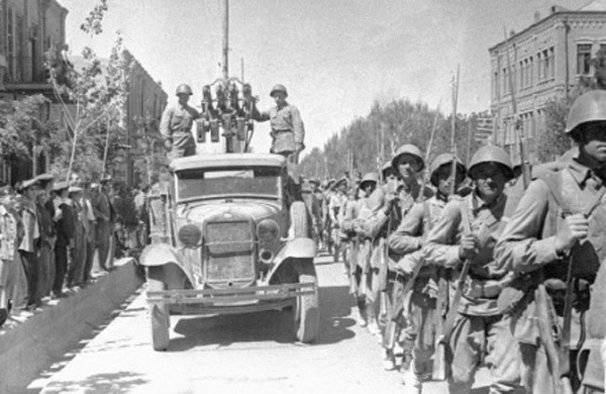
It can be assumed that participation in the occupation of Iran by Soviet troops was caused by Stalin's desire to protect Transcaucasia, primarily the oil-bearing regions of Azerbaijan, from possible aggression by unreliable Turkey or Hitler troops. No less viable is the version of a number of historians that the Soviet leaders hatched plans for the division of Iran with the inclusion of its northwestern part in the Soviet state. Whatever it was, but within five days of the end of August 1941, Soviet troops were able to inflict lightning defeat on the Iranian army and force the shah to sign the act of surrender. In the Soviet invasion of Iran, four combined armies of 40-50 thousand military personnel each and the Caspian military participated flotilla. The superiority of the Soviet troops in both technology, manpower, and preparation played a crucial role in neutralizing the resistance of the armed forces of Shah Iran. As a result of the occupation of Iran, the British received its southern oil-bearing regions, adjacent to the British protectorates of the Persian Gulf, and the Soviet Union took control of the north-western provinces of Iran - the so-called Iranian Azerbaijan.
Mukrinsky Kurdistan
In the Soviet sphere of influence in the territory of the so-called. Western Azerbaijan was part of the so-called. Mukrinsky Kurdistan - the area between Sekkez and Miandoab. The center of this district was the city of Mehabad. The environs of Makhabad have an ancient and interesting history. Once they were part of the kingdom of the Medes, then other ancient and medieval states, located on the territory of Iran. The indigenous population of the area from time immemorial were the Kurdish tribes, who spoke Iranian languages and once professed the ancient Kurdish religion, dating back to Zoroastrianism, and later Islamized. The city of Mekhabad was founded in the 16th century by the sheikh of the Kurdish tribe Mukri Budak-Sultan. The principality of the Mukri tribe existed in Iranian Kurdistan until the middle of the XIX century, giving the name to the whole region.
The national liberation struggle of the Kurds against Iranian sovereignty began as early as the 17th century, when Azerbaijani Turks began to establish their dominance in the region, which gave rise to the famous Iranian Safavid dynasty. In 1609-1610 here a war broke out against the forces of Shah Abbas, which ended with the defeat of the Mukrinsky principality and the resettlement of a significant part of the Kurds in the inner regions of Iran - primarily in the province of Khorasan. Until 1935, the city of Mekhabad, the former capital of Mukrinsky Kurdistan, was called Soudzhbulak. In 1912, for the first time, Russian troops occupied it, establishing the authority of the vice-consul of the Russian Empire in the city. During the First World War, Soudzhbulak passed from the Turks to the Russians and vice versa, while the civilian population suffered the most from the horrors of war.
After the flood that took place in 1935, Soudjbulak was renamed Mekhabad, restoring it as a more modern city. In 1941, the city was occupied by parts of the Red Army, but soon they left it, since the territory of Mukrinsky Kurdistan became a kind of buffer zone between the Soviet and British occupation territories in Iran. Thus, during the Second World War, Makhabad and the region of Mukrinsky Kurdistan actually ended up outside the field of Iranian power, but the power of the occupying forces, Soviet or British, was not established here either. In fact, it existed as an independent Kurdish state, headed by Kazi Mohammed, one of the most authoritative local political figures. It was he, when Mukrinsky Kurdistan, with the suggestion of the Soviet leadership, decided to declare independence, and became the president of the Makhabad Republic.
The Kurds have long wanted to create their own national state. This multi-million people with ancient history and a unique culture, significantly different from the culture of the neighboring Arabs, Turks or Persians, up to the present time does not have its own public education. Although its creation is the goal of the national liberation struggle of the Kurdish population of Turkey, Iran, Iraq, Syria. As Samvel Saribekyan notes in his Ph.D. thesis, “with the tacit consent of the great powers in the 20th century. repeatedly suppressed by force weapons numerous national liberation uprisings of the Kurdish people, with the result that the Kurds suffered huge losses and casualties. On the example of the Kurdish people, one can observe the policy of double standards selectively applied by Western countries (Saribekyan SS. The Kurdish Question in International Relations. Abstract of the dissertation of the candidate of political sciences, Moscow, 2003). One of the most significant attempts to create a Kurdish national state in the twentieth century was the proclamation of the Ararat Kurdish Republic in 1927 in eastern Turkey, which, under the blows of the Turkish troops, ceased to exist three years later - in 1930. The following example of the creation for a short period of the Kurdish state was the Mekhabad Republic under the leadership of Kazi Mohammed.
Qazi Mohammed, Bagirov and the Kurdish question
Qazi Mohammed was born in 1900 year (according to other sources - in 1901 year) in Mehabad, in the family of Kurdish nobility from the tribe of debokri, who belonged to the hereditary Qazi - Muslim spiritual and secular judges of the city of Mehabad. The elder relatives of Kazi Mohammed also differed nationalistic views and advocated the sovereignty of Mukrinsky Kurdistan. In particular, the grandfather of Kazi Mohammed Fayzulla Bey in 1918 headed the Kurdish tribal militia, who resisted the invasion of German and Turkish troops into the territory of Iranian Kurdistan.
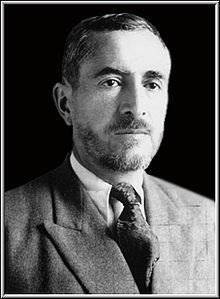 By 1941, when Mukrinsky Kurdistan actually turned out to be a neutral buffer zone between the Soviet and British areas of occupation in Iran, Kazi Mohammed was a spiritual and secular judge and governor of Mekhabad. It goes without saying that this particular forty-year-old man became the most suitable figure for the role of the leader of a virtually independent territory. Moreover, he participated in the activities of the national-liberation organization "Life of Kurdistan" ("Zhiine Kurdistan"), which became the backbone of the Democratic Party of Iranian Kurdistan by 1945.
By 1941, when Mukrinsky Kurdistan actually turned out to be a neutral buffer zone between the Soviet and British areas of occupation in Iran, Kazi Mohammed was a spiritual and secular judge and governor of Mekhabad. It goes without saying that this particular forty-year-old man became the most suitable figure for the role of the leader of a virtually independent territory. Moreover, he participated in the activities of the national-liberation organization "Life of Kurdistan" ("Zhiine Kurdistan"), which became the backbone of the Democratic Party of Iranian Kurdistan by 1945. The idea of creating a state on the territory of North-West Iran that would be under the control of the Soviet Union and in the future could become part of the Azerbaijan SSR did not belong to Joseph Stalin personally, but to the then first secretary of the Central Committee of the Communist Party (Bolsheviks) of Azerbaijan Mir-Jafar Bagirov . 1921 to 1930 this person was the head of the state security organs (Cheka, OGPU, NKVD) of the Azerbaijan SSR, then in 1933-1953. He was the first secretary of the Central Committee of the Azerbaijan Communist Party, periodically combining this post with some other leading posts in the executive and party power of the Azerbaijan SSR.
Mir-Jafar Bagirov was a remarkable person - not only one of the high-ranking party leaders of Transcaucasia, but also a professional intelligence service, one of the founders of the Soviet state security system in the Transcaucasian republics. Bagirov was well versed in the Middle Eastern ethno-religious intricacies and was considered a great specialist in local issues. It was he who largely determined the Soviet foreign policy in the region of the junction of the borders of Azerbaijan, Iran, Turkey, and Iraq.
Bagirov and pushed the Iranian Kurds, led by Kazi Mohammed, to create their own political entity. The final decision on the need to reject Southern Azerbaijan from Iran was made by the Soviet leadership by the autumn of 1945. Encouraged by the victory in the Great Patriotic War, the Soviet leadership went to meet the idea of Bagirov and decided to support the declaration of independence of South Azerbaijan. In this context, Soviet leaders drew attention to Mukrinsky Kurdistan, which was part of a larger region of Iranian Azerbaijan.
September 1946 was marked by negotiations between Bagirov and Kazi Mohammed, but the latter did not want to include Mukrinskaya Kurdistan into the autonomy of Azerbaijan and demanded the creation of an independent state. Bagirov, however, ultimately agreed with Kazi Mohammed. However, according to Bagirov, the creation of an independent Kurdish republic should have been preceded by the formation of a mass left-oriented political party and the beginning of progressive socio-economic reforms. As a result, on October 25, 28-1945, the first congress of the Democratic Party of Iranian Kurdistan was held, headed by the same Kazi Mohammed as chairman. The first 12 in December 1945 was the proclaimed independence of the Democratic Republic of Azerbaijan with the center in Tabriz. Simultaneously, preparations for the proclamation of independence began in Mehabad.
Creation of the Mehabad Republic
22 January 1946 on Charchar Square (“Four Lantern Square”) in Mehabad Qazi Mohammed proclaimed the creation of the Republic of Kurdistan, which also received the name of the Mehabad Republic in history. In a solemn speech, Kazi Mohammed declared the right to self-determination of the Kurdish people.
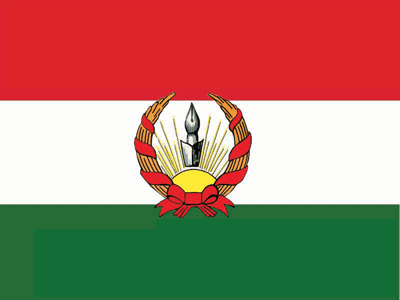 Above the city administration building, the national flag of Kurdistan was raised — red-white-green with the image of the sun and a book surrounded by ears of corn. Officially, the Kurdish Republic considered itself autonomy within Iran, but claimed to have certain sovereignty in the direction of determining domestic and foreign policy. The Constitution of the Republic was adopted, regulating relations in the country, government bodies were created, including the National Government of Kurdistan.
Above the city administration building, the national flag of Kurdistan was raised — red-white-green with the image of the sun and a book surrounded by ears of corn. Officially, the Kurdish Republic considered itself autonomy within Iran, but claimed to have certain sovereignty in the direction of determining domestic and foreign policy. The Constitution of the Republic was adopted, regulating relations in the country, government bodies were created, including the National Government of Kurdistan. The Democratic Party of Iranian Kurdistan became the ruling party of the Makhabad Republic. Despite its pro-Soviet orientation, in practice, the leaders of the independence movement chose not to risk and touch the traditional, established over the centuries, way of socio-economic organization of Kurdish life. However, in the cultural sphere, the Mehabad Republic in the very first days of its existence began to make serious progress. The immediate gains of the republic include the transition of the entire education system in Iranian Kurdistan to Kurdish, the development of a draft universal compulsory secondary education for children 6-14 years, the introduction of school uniforms, the creation of literacy courses among the adult population of the republic. The Soviet Union supplied printing equipment to Mehabad, which began printing both educational and propaganda literature. The short period of the existence of the Mehabad Republic became the time of the real flourishing of Kurdish culture.
Nevertheless, the existence of the Kurdish republic was threatened by direct danger from the shah of Iran, behind which stood the United Kingdom. Since Qazi Mohammed did not trust the local leaders much, he enlisted the support of Mustafa Barzani, the leader of the Barzan tribe, who migrated from the territory of Iraq after the suppression of the uprising. On the day of the holiday Nouruz, traditionally celebrated by the Kurdish population, 21-22 March 1946, Mustafa Barzani and Kazi Mohammed met. It was a strategic decision to create a Kurdish police, which invited men 15-60 years. The commander of the police was appointed Mullah Mustafa Barzani, who was given the rank of major general.
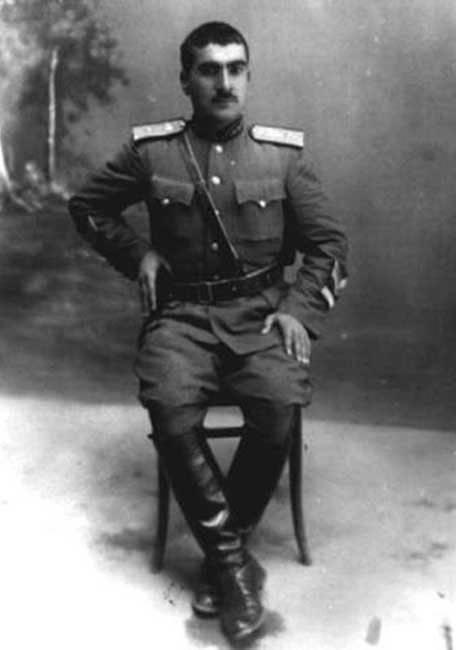 Here it is worthwhile to dwell a bit on the personality of this outstanding man, who was destined to play an enormous role in the national liberation struggle of the Kurds of Iraq and Iran. Mustafa Barzani was born on March 14 1903, the year in the family of the sheikh of the Barzan Mohammed tribe. Mustafa’s elder brothers, Sheikh Abdel-Salam and Sheikh Ahmed Barzani, were the spiritual leaders of the tribe after the death of their father. Having been educated in the madrasa of Barzan and Sulaymaniyah, Mustafa Barzani became Molloy Mustafa, as he was nicknamed, respecting spiritual authority and great knowledge in the religious sphere. But besides spiritual activity, Mustafa Barzani was no less brilliant in military affairs. He took up arms in 16 years of age, fighting against the British during the Kurdish uprising of the year 1919. Then Mustafa Barzani took part in rescuing a group of Armenian families from the Turkish genocide. During the 1931-1932 period, when another Kurdish uprising was raging in Iraq, Mustafa, the 28-year-old, commanded the Kurdish militia, completely defeating two Iraqi infantry battalions, three cavalry squadrons and an artillery battery.
Here it is worthwhile to dwell a bit on the personality of this outstanding man, who was destined to play an enormous role in the national liberation struggle of the Kurds of Iraq and Iran. Mustafa Barzani was born on March 14 1903, the year in the family of the sheikh of the Barzan Mohammed tribe. Mustafa’s elder brothers, Sheikh Abdel-Salam and Sheikh Ahmed Barzani, were the spiritual leaders of the tribe after the death of their father. Having been educated in the madrasa of Barzan and Sulaymaniyah, Mustafa Barzani became Molloy Mustafa, as he was nicknamed, respecting spiritual authority and great knowledge in the religious sphere. But besides spiritual activity, Mustafa Barzani was no less brilliant in military affairs. He took up arms in 16 years of age, fighting against the British during the Kurdish uprising of the year 1919. Then Mustafa Barzani took part in rescuing a group of Armenian families from the Turkish genocide. During the 1931-1932 period, when another Kurdish uprising was raging in Iraq, Mustafa, the 28-year-old, commanded the Kurdish militia, completely defeating two Iraqi infantry battalions, three cavalry squadrons and an artillery battery. After the suppression of the rebellion of Mall, Mustafa moved to Turkey, but was deported to Iraq. In 1943, Barzani fled from Iraq to neighboring Iran, from where he again invaded his native Barzan at the head of a detachment of Kurdish militias and was able to disarm the entire regional police. In August 1945, Iraqi authorities launched a new military campaign against the Barzan tribe, this time relying on British assistance aviation and armored units. The militias led by Mustafa Barzani retreated to Iranian territory along with the whole tribe (10 thousand people in total, 2 thousand of them were militia fighters). So he ended up in the Mekhabad Republic, where he was accepted into military service and was appointed commander of the armed forces.
The backbone of the militia consisted of three battalions of 500 fighters in each, staffed by members of the Barzan tribe with professional soldiers - former officers of the Iraqi army of Kurdish origin - at the head. Mass support for the Barzani detachments was made up of local tribal militias, consisting of foot soldiers and 8800 1700. 29 April 1946 in the battle of Sekkez Mustafa Barzani managed to inflict a serious defeat on the Iranian forces, seizing 2 artillery guns, 17 machine guns and 120 prisoners. In alliance with the Azerbaijani command of Tabriz, the Mehabad Kurds were preparing a new attack on the positions of the Iranian troops. On April 23, it was decided to create the united armed forces of the Kurdish Republic and the Democratic Republic of Azerbaijan, since the Azerbaijani authorities by this time could not create their own effective militia. General Moll Mustafa Barzani also became the commander-in-chief of the united militia.
Meanwhile, Qazi Mohammed decided to resolve the situation peacefully, saving thousands of lives, and to achieve the creation of a Kurdish autonomous state within Iran. In August, 1946 went to Tehran, where, at a meeting with Kavam al-Saltan, the prime minister of the Shah government, he proposed to create a Kurdish autonomous republic. Sly Kavam agreed in words and assured Kazi Mohammed of full support, but he also declared that the Governor-General of Azerbaijan, who, naturally, refused, also agreed to take this step.
Meanwhile, since the middle of spring 1946, the foreign policy situation in the Middle East began to take shape clearly not in favor of the Kurdish Republic. The Soviet Union decided to withdraw its troops from the territory of Iran, in exchange for granting oil concessions to the Soviet government in Northern Iran. In May, 1946, Mr. Stalin withdrew Soviet units from Iran, but the Iranian Majlis did not ratify the concessions agreement. So Prime Minister Kawam was able to circle around not only the Kurdish leaders, but also Stalin himself.
21 November 1946 began the entry of Shah troops into the territory of Iranian Azerbaijan. The number of contingent reached 20 battalions of troops. 15 December 1946 Shah's troops captured Tabriz, and high-ranking leaders of the Democratic Republic of Azerbaijan fled to the Soviet Union. The decision was made to retreat to the Soviet territory and the units of the Barzan tribe led by Mustafa Barzani. Mustafa offered Kazi Mohammed to also leave the territory of Kurdistan and hide in the USSR, but the President of the Kurdish Republic decided to stay in order to save the Kurdish population of the region from possible cruel repression by the Shah authorities at the cost of his life. He began negotiations with the commander of the Iranian contingent, General Humayuni, on the possible conditions for the surrender of the Kurdish militia on the basis of a general amnesty for its participants.
The Iranians verbally promised Kazi Mohammed an amnesty, although he was well aware that in reality no one would save his life. Qazi Mohammed was arrested along with his colleagues and placed under a military tribunal. 30 March 1947 Qazi Mohammed and his closest associates Sadr Qazi and the Minister of Defense of the Mekhabad Republic Seif Qazi were publicly hanged on that very square of Charchar, where Kurdistan’s independence was proclaimed a year earlier. At the same time, before surrendering to the Iranian command, Qazi Mohammed presented the Kurdish national banner to Mustafa Barzani and blessed him and his followers for the further struggle for the national liberation of the Kurdish people.
Barzants in the Soviet Union
The liquidation of the Mehabad Republic put Mustafa Barzani and his compatriots in front of the unpleasant prospect of returning to Iraq, where the leaders of the Kurdish movement did not expect anything good. Therefore, Molla Mustafa decided to send back to Iraq only the main part of the tribe, first of all - women, children, old men, inept men, and he, at the head of the militia, decided to break into the territory of the Soviet Union.
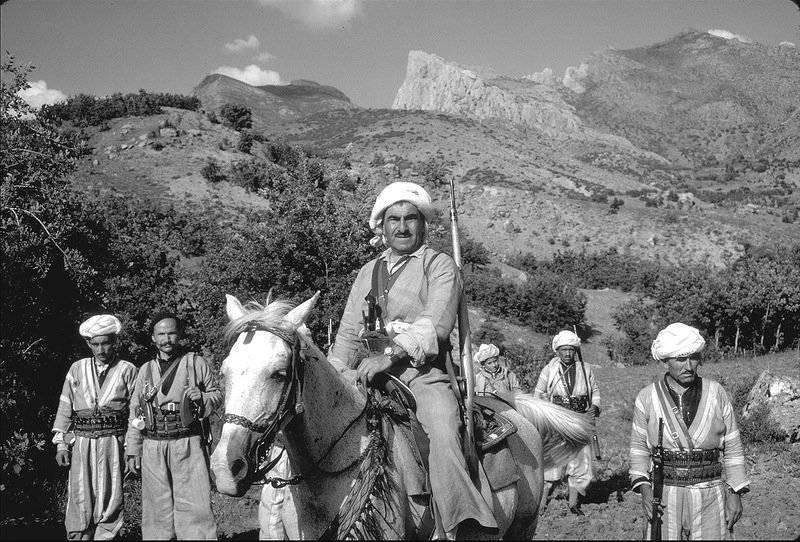
20 April 1947 began a unique march of Barzans from the area of the Godard River to the borders of the Soviet Union. Mustaf Barzani, at the head of a detachment around the 500 fighters, for several months, broke through to the Soviet border, fighting not only with Iranian, but also with Turkish units. In the area of Argoš, Barzani detachment was subjected to 12 Iran’s airstrikes bombing the territory where Kurdish partisans were dispersed. 21 May Kurds crossed the Turkish border in the Bedau area, 23 May were bombarded by Turkish aircraft. In an effort to stop Barzani and his people by any means, the Iranian units several times engaged in battle with the Kurdish militias and each time suffered serious casualties. On July 11, in the area of the city of Maku, the Barzans attacked the Iranian unit, as a result of which the regular Shah's troops were defeated by the militia, while the latter escaped with minimal casualties. July 15 squad Barzani went to the shores of the Arax. The scouts of the detachment crossed the river and contacted the command of the Soviet border guards. The latter did not dare to miss the Kurds, nor to hinder them by force. As a result, having forced Araks at their own peril and risk, 17-18 June 1947, the Barzani militia found themselves on the territory of the Soviet Union - in the Nakhichevan Autonomous Region of Azerbaijan SSR. In total, 504 Kurdish militias arrived in the Soviet Union.
The Soviet leadership, although in fact it did not support the Kurds during the defeat of the Mehabad Republic, nevertheless decided not to abandon their allies. The leadership of the Azerbaijan SSR placed them on the territory of the republic - in Absheron, intending to begin military training for the Kurds. Obviously, at first, the Soviet leaders were still hoping for a possible revenge in Iran and kept the Kurds in close proximity to the Iranian border - in camps in Azerbaijan, but then, abandoning their previous plans, decided to resettle the Kurds in the Uzbek SSR, in rural areas of Tashkent areas. The latter could not be perceived otherwise than to link unwanted elements away from the Iranian border.
Despite the fact that the Soviet leadership reacted with a certain degree of suspicion to Kurdish immigrants, Barzani and a number of other Kurdish commanders received the possibility of military training in Soviet military schools and academies. This decision of the Soviet leadership was associated with far-reaching plans to use the Kurdish national liberation movement as a subversive tool of Soviet foreign policy in the Middle East.
Pavel Sudoplatov, who met with Barzani on behalf of General Abakumov, recalls: “Abakumov forbade me to inform the head of the Azerbaijani Communist Party, Bagirov, about the content of the talks with Barzani and, especially, about Stalin’s consent to allow Kurdish officers to receive training in our military schools. The fact is that Bagirov sought to use Barzani and his people to destabilize the situation in Iranian Azerbaijan. However, Moscow believed that Barzani could play a more important role in overthrowing the pro-British regime in Iraq. In addition, and especially importantly, with the help of the Kurds, we could permanently disable Iraq’s oil fields (Mosul), which were then of crucial importance in supplying the entire Anglo-American military group in the Middle East and the Mediterranean with oil products. Barzani, together with his disarmed detachments and members of their families, was sent to Uzbekistan. ”
In 1952, the city of Barzani and his relatives and colleagues settled on a large collective farm in the outskirts of Tashkent, where military training was organized for Kurdish immigrants. The leaders of the Soviet special services assumed that a special brigade of up to 1,500 soldiers would be formed from the Kurds of the Barzani tribe, which could be used in the interests of the Soviet Union in the Middle East, primarily in Iraq. In many respects, it was the hopes that fed the Soviet leaders in relation to the Kurdish national liberation movement that served Barzani and his fellow tribesmen as a kind of protection against possible reprisals while living on the territory of the Soviet Union.
After coming to power N.S. Khrushchev policy of the Soviet state towards immigrants from the Barzan tribe has undergone some changes. 200 people went to study at higher and secondary special educational institutions, and Mustafa Barzani himself graduated from the Military Academy named after Mv Frunze and received the rank of army general. Later, Mulla Mustafa Barzani returned to Iraq (in 1958), where he led the Democratic Party of Kurdistan and participated in the long-term Kurdish-Iraqi national liberation war, then was forced to emigrate to Iran. In 1979, he died in the United States, after which he was buried near the Iran-Iraq border. In 1993, the ashes of Molla Mustafa were reburied in their native Barzan.
As for the reasons for the defeat of the Mekhabad Republic, historians have several main points of view on this issue. Academician Prince Ibragimovich Mirzoev, one of the leading Kurdish scholars, argues that the main reason for the fall of the Makhabad Republic was the lack of support from the Soviet Union, which effectively condemned the Kurdish militia to a legitimate military defeat from the Iranian army, many times superior in power and armament. Specific features of the Soviet policy towards Kurds Mirzoev connects with the name of Stalin, who is accused of numerous repressions against the peoples of the USSR, including Kurds (Mirzoyev KI The Mekhabad Republic (January 22 1946 December 17 1946) // Friendship. M., 2002 No. 14-15. C. 78-80).
However, the point of view of other researchers who pay attention to the fact that in the 1947 year, exhausted by the recent hardest World War II, the Soviet Union was not ready for open armed confrontation with yesterday's allies - the United States of America and the United Kingdom - seems more reasonable. Meanwhile, there is no doubt that the United States and Great Britain would stand up for Iran in the event of an open Soviet military intervention in order to support the Mehabad Republic. Most likely, Stalin, like Bagirov, and other Soviet leaders, did not put any personal sympathies or antipathies towards the Kurds at the head. On the one hand, they hoped to subjugate northwestern Iran to Soviet influence, including with the help of the Kurdish Republic, but on the other hand, faced with active opposition from the Western powers, were forced to retreat, not wanting to get involved in a direct military confrontation.
Moreover, it must not be forgotten that by the time of the events described the USA was already a nuclear power and its military potential was superior to the Soviet one, given that the States were not so affected by World War II. Whatever it was, but the experience, albeit of a short, but the existence of an independent Kurdish state in the years of the end of the Second World War, becomes particularly relevant against the background of ongoing events in the Middle East, which suggests a promising change in the political map of the region with the formation of Kurdistan as a sovereign political subject (at least its Iraqi part).
Information